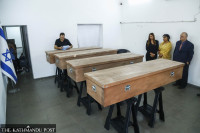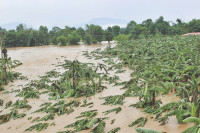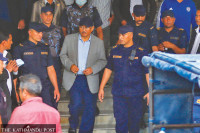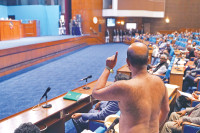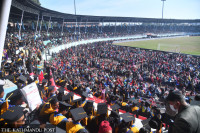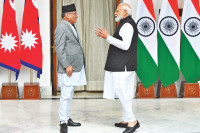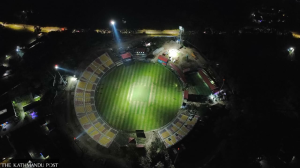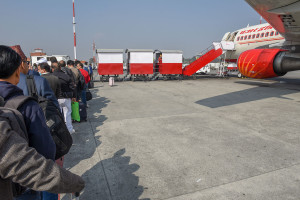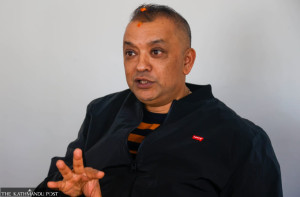Special Supplement
Despite roaring success, entrepreneurs say Nepal is not doing enough to attract high-paying tourists
Businesses in travel and tourism sector are excited about what the new season has to offer, and expect around 1.5 million tourist arrivals in 2019.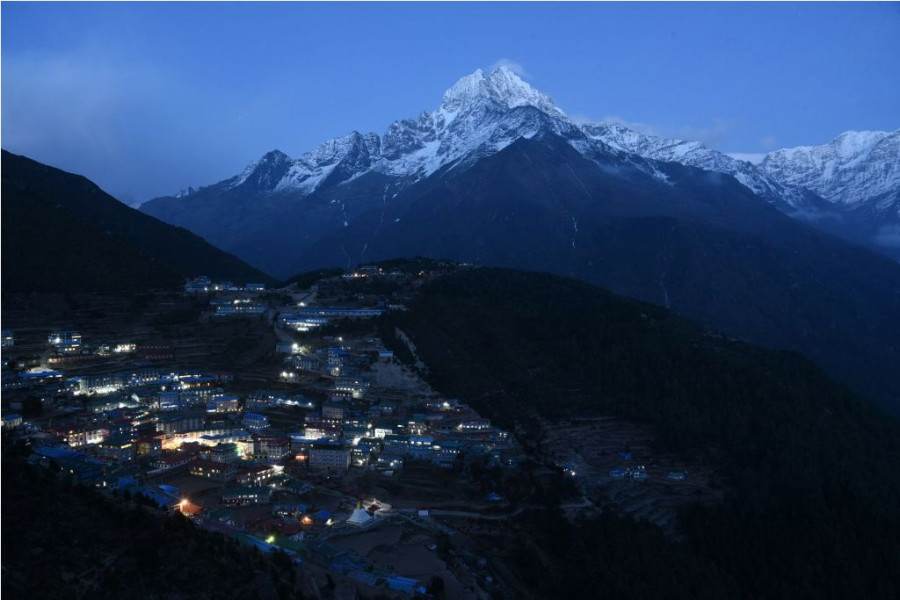
Sangam Prasain
More people are visiting Nepal than ever before. International tourist numbers have doubled in less than a decade, and more Nepalis are setting out to explore the domestic turf. All this is good news for Nepal’s tourism, but issues remain. In 2018, international tourist arrivals crossed the magic figure of 1 million for the first time in six decades since Nepal opened up to foreigners; and growth has come from three markets—India, China and the US. From its garden-variety cultural pantheon to the great Himalayan range and picturesque hill and Tarai landscapes that offer one of the world’s most diverse range of flora and fauna, Nepal has everything to attract travellers; and the 1 million arrivals this year is still way below its potential.
Already marred by deadly aviation mishaps, Nepal witnessed the US-Bangla plane crash at its only international airport in the Capital in March this year which killed 51 people. In October, five South Koreans and four Nepali guides died at Mount Gurja base camp. Wide concern emerged when news reports exposed insurance scams in high-altitude chopper rescues and hospital treatment which rocked the tourism industry and embarrassed the government. The European Commission also continued its ban on Nepali airlines for five consecutive years through an updated air safety list, but not all has been bleak.
Nepal earned a record Rs67.09 billion in foreign exchange from the tourism industry in the last fiscal year ended mid-July; and while overall foreign direct investment (FDI) pledges have dropped, Nepal’s tourism industry emerged as the favourite among investors by raking in more than half of the total FDI commitments made in the first four months of this fiscal year, thanks to a booming hotel and casino industry. State-owned Nepal Airlines added two wide-body Airbus A330 jets to its fleet, and private carriers acquired a dozen new planes to cater to the growing domestic market. Wildlife is one of Nepal’s biggest attraction; and this year, Nepal also made international headlines by doubling the population of its wild cats.
A major hindrance has come in the form of the government’s decision to ban Indian currency notes of denominations higher than Rs100 in Nepal. This represents one of the many issues that require immediate attention to reap the benefits of the burgeoning tourism industry. “The decision is a big setback, particularly for cash-driven industries like tourism,” senior tourism entrepreneur Basanta Raj Mishra told the Post. India is Nepal’s biggest source of tourists. More than 1.36 million Indian sightseers, among them 1.2 million overland travellers, visited Nepal in 2017, according to the Tourism Ministry; and on average, they spent as much as Rs11,310 each. Indian visitors coming by land are not included in the government arrivals data.
“India’s middle class makes up the biggest chunk of tourists visiting Nepal, and they don’t carry plastic money,” said Mishra, “the ban will affect the casino industry, hotels and restaurants.”
Nepal’s only international airport in the Capital is another issue that is an obstacle to the country’s economic and tourism potential, and although the government has invested billions to construct two new international airports in Pokhara and Bhairahawa, it is uncertain when these mega projects will come online as their completion deadlines have been extended again and again.
Gautam Buddha International Airport in Bhairahawa is the gateway to the birthplace of Lord Buddha. It is expected to come into operation by the end of 2019. The airport was initially slated to be ready by December 2017, but following shortages of fuel and building materials in the wake of the 2015 Indian blockade and payment disputes between the Chinese and Nepali contractors, the project deadline was extended on multiple occasions. “We are optimistic about bringing the airport online by the beginning of 2020,” project director Pradeep Adhikari told the Post. “Most of the work has been completed.”
Nepal has announced the year 2020 as Visit Nepal campaign version 3.0 with the expectation of attracting 2 million foreign tourists and earning Rs200 billion. A second international airport is crucial to meet the goal. “Kathmandu’s airport alone will not be able to handle the traffic, so it is necessary to bring the second international airport into operation before the Visit Nepal campaign kicks off,” said senior tourism entrepreneur Yogendra Sakya.
Nepal’s tourism sector is booming also because Nepalis are setting out to explore their own country in greater numbers. The fact was evident immediately after the twin- earthquakes when hotels in major tourist destinations like Pokhara, Chitwan and other cities saw a record number of Nepali stayers. “Until a few years ago, only foreigners were considered tourists; but Nepalis are discovering their own country. We have seen an increase in weekend travellers from major cities in Nepal. This is a good sign,” Deepak Raj Joshi, executive officer at the Nepal Tourism Board, told the Post.
According to a World Travel and Tourism Council report, domestic travel spending generated 57 percent of the direct travel and tourism Gross Domestic Product (GDP) in 2017 compared with 43 percent of foreign visitor spending. The total contribution of the travel and tourism industry to the GDP was Rs195 billion, and domestic travel spending is expected to grow to Rs100.4 billion in 2018. Travel trade entrepreneurs are excited about what the new season has to offer and expect around 1.5 million arrivals in 2019. A number of luxury hotels are also set to come into operation next year, signalling high-yield tourists and Nepali airlines continue to spread their wings to new routes.
“We need to repackage and remodel ourselves. The world doesn’t really know what Nepal has to offer,” said Joshi. “It is time to market Nepal as a luxury destination, and the government should be flexible about its policies.” From big game hunting to in-flight champagne breakfasts, Nepal continues to attract high-yield tourists, but entrepreneurs lament the lack of policies to cater to high-paying international tourists.
“Arabian millionaires who arrived in Nepal on a chartered flight offered to pay $1,200 for a 10-minute chopper flight to take photographs and a selfie with the Hyatt Regency as a backdrop,” said Anil Manandhar, a corporate manager at Shree Airlines. “But the aviation regulator refused to give permission. There are many such high rollers who want to tour Nepal on a chopper. The government should also formulate policies to promote luxury tourism.” Manandhar said his client paid $25,000 to tour Dhulikhel, Lukla and Annapurna Base Camp.




 12.12°C Kathmandu
12.12°C Kathmandu
